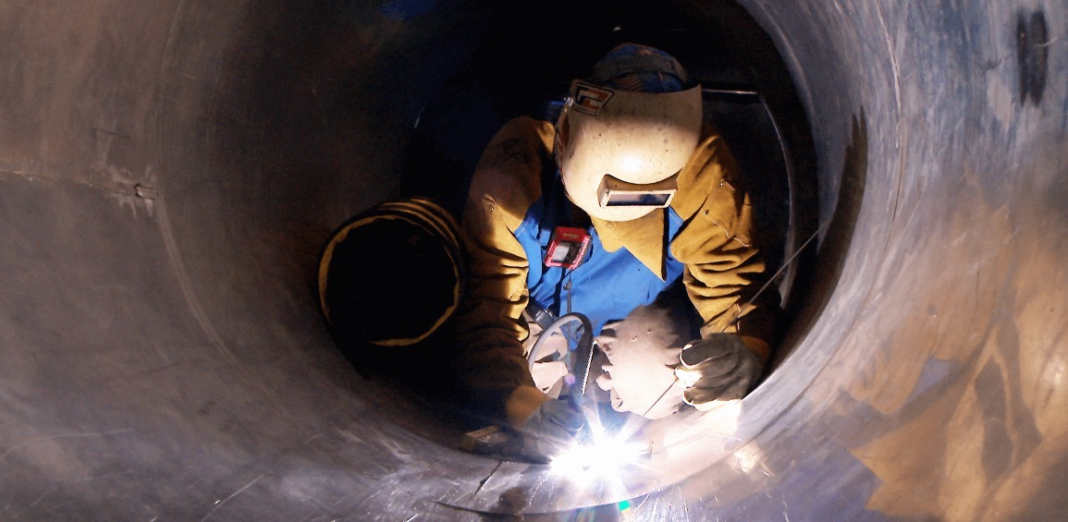A workplace can feature numerous layouts like open warehouses or offices with rows of cubicles. Many of such features may pose workers the risk of confined spaces. It may become workers to work in such an environment that might navigate to various confined space hazards. As these areas are extremely risky due to hundreds and thousands of injuries and deaths each year.
When it comes to the laws and legislation for confined space entry and work, businesses, their employers and employees need to know the nature of the risk and the safe working practices to ensure competence for safe work.
This blog pose will be a detailed explanation of what everyone needs to know about confined space entry and what are the principles of undertaking the work safely.
Table of Contents
What is a Confined Space?
A confined space is any space located inside of a structure or a system where work is done. It is an enclosed place where there is a high chance of a fatality or serious damage from hazardous materials or unsafe situations such as the absence of oxygen or contact with fumes or gaseous vapors.
However, not all the internal spaces fit into the definition of confined spaces. To understand a confined space, the following characteristics are to keep in mind:
- The space is sufficiently larger to enter and work in it
- The space contains possible hazardous substances and/or atmosphere
- The space is not ideal for continuous work
- The space has restricted openings for entering and leaving
Confined Space Hazards Statistics
Many people are killed or severely injured in confined spaces each year within the workplaces or organizations. According to statistics from the Bureau of Labor Statistics, nearly 1030 workers died from occupational injuries involving a confined space between the years from 2011 to 2018.
According to the National Institute for Occupational Safety and Health (NIOSH), nearly 2.1 million workers enter permitted confined spaces each year, out of which 60% of confined space fatalities are rescuers.
This puts a legal duty on employers to prevent their staff from any hazards that confined spaces may pose and implement controls to work safely when working within such an environment.
Major Hazards of Working in Confined Space
A confined space is a serious health and safety concern for almost every business, its employers, and its employees. Such work areas are containing more risks as compared to any other work environment because of their hazardous nature and toxic environments.
Some of the key hazards of working in confined spaces are:
- Toxic Atmosphere
The toxic atmosphere is considered one of the major hazards of confined space. Such an environment can have harmful effects on the workers working inside them. Those staying or working for long hours in such an atmosphere may experience impairment of judgment, unconsciousness, or even death at the moment. Such a toxic atmosphere may contain carbon monoxide or hydrogen sulfide gases, which individuals find difficult to breathe.
- Oxygen Deficiency
Most commonly confined spaces lack the appropriate amount of oxygen for workers working in them. This may pose obvious hazards to workers which in turn can lead workers to become faint or in worse circumstances can become fatal.
- Fires & Explosions
Another major hazard is fires and explosions within confined spaces. The presence of flammable liquids, gasses, or combustibles is some of the significant hazards that can result in fire ignition.
- Excessive Heat
Due to the enclosed nature of confined spaces, the risk of excessive heat is very common. It can cause heat stroke or can make workers unresponsive.
How to Control the Hazards in Confined Spaces?
Since the nature of confined spaces varies, the way employers and their staff control the hazards depends on the specific hazard. However, the following are the key things to keep in mind:
- Monitor the Situation
Monitoring the situation of the work is considered an effective approach to controlling the hazard. There must be someone outside of the space who is continuously monitoring the condition of the worker undertaking such work so that they can respond instantly in case of any emergency.
- Monitor the Atmosphere
If a confined space has potential risks of hazardous chemicals, dangerous gasses, lack of oxygen, or excess oxygen. The workers must examine the environment thoroughly so that immediate preventive measures are implemented to control the risk.
- Personal Protective Equipment
Personal protective equipment or PPE is also effective to control measures that can make a difference between employees’ life and death at work.
Having suitable PPE for work can help prevent them from various injuries, incidents, or diseases.
Legal Responsibilities Related to Confined Spaces
Employers are legally obliged under the Management of Health and Safety at Work Regulations 1999 to identify and assess any hazards that confined space work can pose to their workforce. It also emphasizes they take whatever steps possible to prevent them from the hazards and risks of confined space work.
This can help businesses prevent them from legal, moral, and financial claims, protect their staff, and build a positive image within the industry.
Confined Space Training
Providing sufficient training to the staff is essential to ensure they are trained, equipped, and competent enough to work safely in confined spaces. There are numerous ways employers can provide confined space training and guidance to their staff that can help them understand the law and implement safe working practices while undertaking such work.
Conclusion
This is a thorough guide on working in confined spaces that help both employers and their staff understand the risks and hazards of confined spaces and what are the ways to control the hazards.
Million people die every year due to inadequate knowledge and inappropriate work practices that can lead businesses and their employers to severe implications.
Therefore, workers conducting such work must be trained adequately so that they are competent enough to work safely.
Also Read About – sedordle
